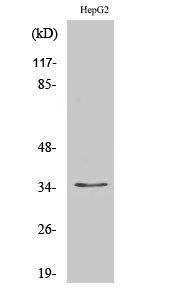Total Nkx-3.1 Cell-Based Colorimetric ELISA Kit
- Catalog No.:KA3337C
- Applications:ELISA
- Reactivity:Human
- Gene Name:
- NKX3-1
- Human Gene Id:
- 4824
- Human Swiss Prot No:
- Q99801
- Mouse Swiss Prot No:
- P97436
- Storage Stability:
- 2-8°C/6 months
- Other Name:
- Homeobox protein Nkx-3.1 (Homeobox protein NK-3 homolog A)
- Detection Method:
- Colorimetric
- Background:
- alternative products:Additional isoforms seem to exist,disease:NKX3-1 has been thought to be one of the target gene of the 8p21 loss of heterozygosity, common in prostate cancer, but neither disruption of the coding region of the gene, nor mutations have been found in prostate cancer.,function:Transcription factor, which binds preferentially the consensus sequence 5'-TAAGT[AG]-3' and can behave as a transcriptional repressor. Could play an important role in regulating proliferation of glandular epithelium and in the formation of ducts in prostate.,induction:By androgens and, in the LNCAP cell line, by estrogens. Androgenic control may be lost in prostate cancer cells during tumor progression from an androgen-dependent to an androgen-independent phase.,similarity:Belongs to the NK-3 homeobox family.,similarity:Contains 1 homeobox DNA-binding domain.,subunit:Interacts with serum response factor (SRF) (By similarity). Interacts with SPDEF. Interacts with WDR77.,tissue specificity:Highly expressed in the prostate and, at a lower level, in the testis.,
- Function:
- urogenital system development, somitogenesis, morphogenesis of a branching structure, regionalization, reproductive developmental process, transcription, regulation of transcription, DNA-dependent, pattern specification process,salivary gland development, heart development, negative regulation of cell proliferation, embryonic development ending in birth or egg hatching, anterior/posterior pattern formation, prostate gland development, tube morphogenesis, exocrine system development, segmentation, tube development, regulation of cell proliferation,chordate embryonic development, regulation of transcription, reproductive structure development, gland development,branching morphogenesis of a tube, regulation of epithelial cell proliferation, negative regulation of epithelial cell proliferation, regulation of RNA metabolic process, pharyngeal system development,
- Subcellular Location:
- Nucleus .
- Expression:
- Highly expressed in the prostate and, at a lower level, in the testis.
- June 19-2018
- WESTERN IMMUNOBLOTTING PROTOCOL
- June 19-2018
- IMMUNOHISTOCHEMISTRY-PARAFFIN PROTOCOL
- June 19-2018
- IMMUNOFLUORESCENCE PROTOCOL
- September 08-2020
- FLOW-CYTOMEYRT-PROTOCOL
- May 20-2022
- Cell-Based ELISA│解您多样本WB检测之困扰
- July 13-2018
- CELL-BASED-ELISA-PROTOCOL-FOR-ACETYL-PROTEIN
- July 13-2018
- CELL-BASED-ELISA-PROTOCOL-FOR-PHOSPHO-PROTEIN
- July 13-2018
- Antibody-FAQs



